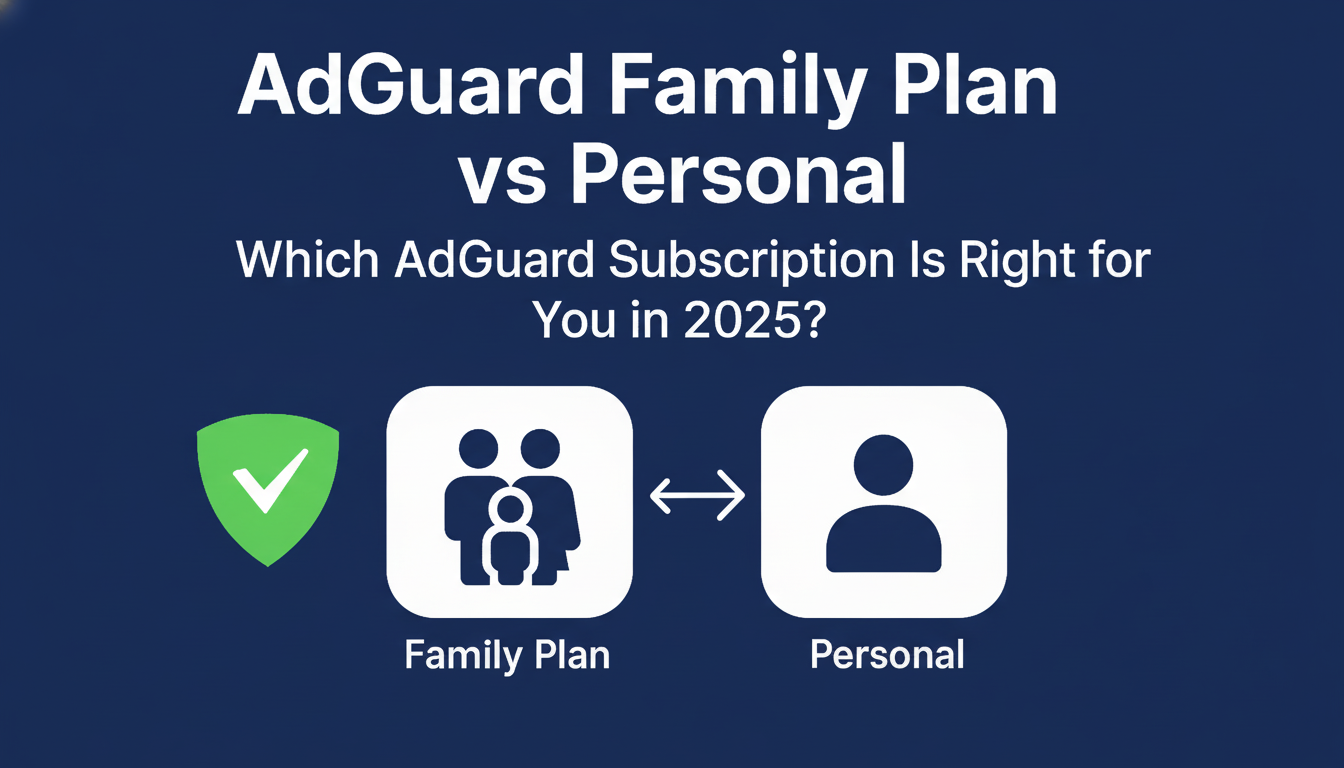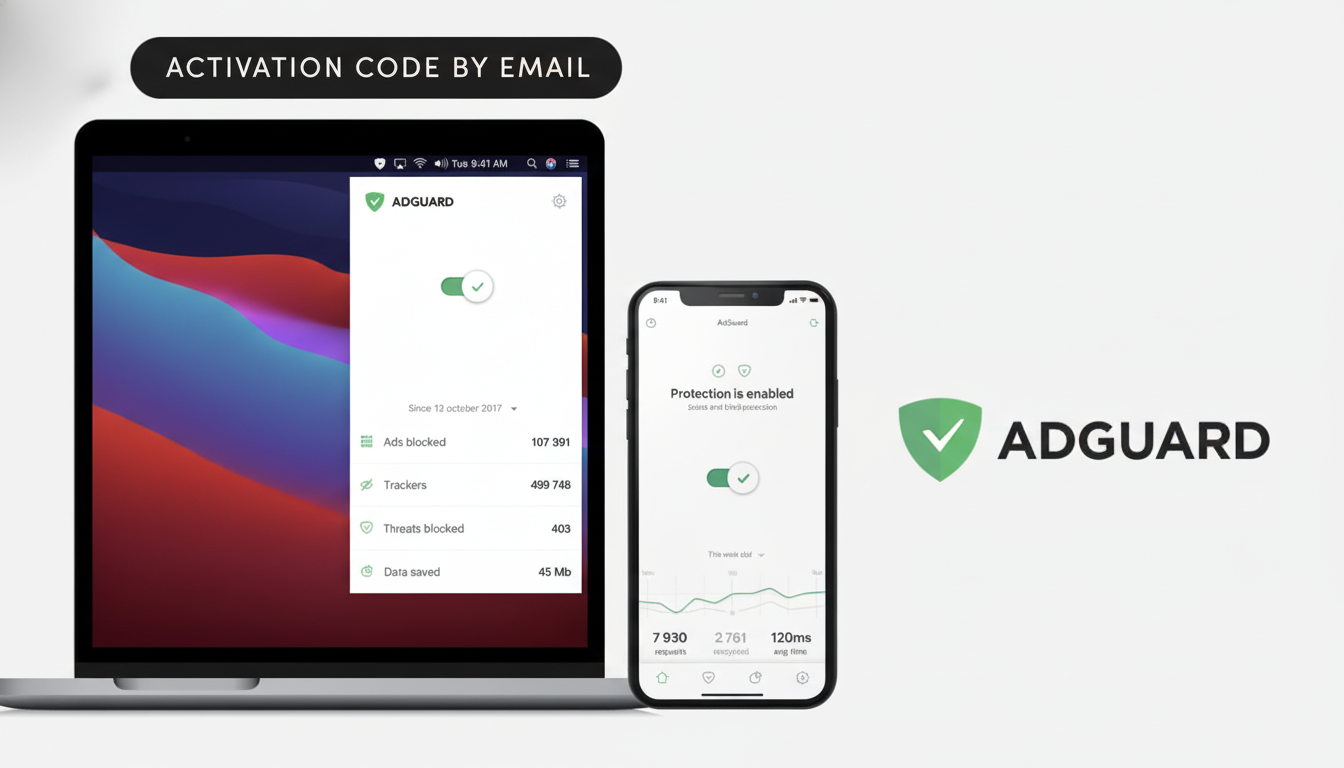An advanced ad blocker is rarely available with a lifetime pass, but it is now offered for a one-time $19. The Family Plan will cover multiple devices with ad blocking, anti-tracking, and parental controls.
It is a dramatic discount from the regular list price and a sign that privacy tools want to target multi-device households.

What the $19 deal includes for the family plan license
The lifetime license of the Family Plan opens access to ad blocking and privacy protection on up to nine devices, including Windows, macOS, Android, and iOS. This is important for today’s homes where laptops, tablets, and phones are inundated with aggressive ad tech and trackers.
AdGuard promises to remove display advertising, pre-roll and mid-roll video ads, pop-ups, and in-page banners, including on YouTube. Its filters also focus on trackers and behavior-based analytics scripts, which can trace users through websites and apps.
For households, parental controls allow parents to filter adult content, activate Safe Search, and have more control over what children can watch. In addition to cleaner pages, AdGuard also protects users from malicious domains, phishing pages, and scammy link redirects, which drive traffic from suspicious ads. The result is browsing that’s smoother, less distracting, and less risky.
Why ad blocking keeps growing across the modern web
Ad load has increased along with the number and complexity of tracking scripts. Researchers at Princeton have demonstrated that most popular sites are filled with dozens of third-party trackers, while consumer advocates have long alleged that the data collection at the core of personalized ads has been shrouded in secrecy. Given this, it’s not a surprise that GWI puts the share of global internet users using an ad blocker at an estimated 37%, a number that has proved remarkably hard to whittle down even as platforms get more aggressive about disabling them.
The economics behind it are straightforward as well – independent tests have concluded over the years that an ad and tracker block can reduce page weight, bandwidth costs, and load times, which are particularly noticeable on mobile networks, and which amount, for entire families including multiple devices, quickly close to or slightly above the price of a network-wide subscription or a multi-device license.
AdGuard employs a mix of filter lists and heuristic rules to remove ad elements and tracking beacons before they are rendered. Its filters are updated routinely and include popular community-driven lists like EasyList and EasyPrivacy, supplemented by AdGuard’s own rules. Additionally, on compatible platforms, HTTPS filtering allows the app to identify and remove ads served over encrypted channels, which are now the vast majority of ads served on the web.

Ad blocking on streaming and video platforms has developed into a cat-and-mouse game. AdGuard uses tools such as cosmetic filtering to hide ad boxes, host-level blocks for known ad and tracking sites, and on-page rules that change as sites alter their ad delivery methods. No ad blocker is foolproof – some sites will detect the ad block and others will introduce allowlisting requirements – but new builds are released within hours or days to restore functionality for the vast majority of sites.
Family controls and real-world use across devices
Households will likely appreciate the combination of privacy and policy. Parents can restrict access to adult content, block specific categories from gambling to violence, and force Safe Search across major engines. In day-to-day use, this means fewer gambling ads interrupting kids’ mobile games, less bait content in the sidebars of every page, and fewer risky redirects when a sibling mistypes a URL.
The nine-device allowance should cover a typical family’s mix of phones, tablets, and laptops without juggling logins or buying piecemeal licenses. Settings can be tuned per device, so a teen’s phone can have tighter filters than a parent’s work laptop — both can benefit from tracker blocking and malware protection, however.
Price check and alternatives to AdGuard’s family plan
At $19 for life, the math compares well. Comparable premium blockers often charge recurring fees — app-specific subscriptions on iOS in particular or desktop bundles frequently run annually. DIY options like Pi-hole can be potent and are free, but they need a spare device, semi-regular maintenance, and home networking know-how. Browser-native protections like Mozilla’s Enhanced Tracking Protection or privacy-focused browsers are useful but don’t extend to system-wide, multi-app filtering on mobile and desktop like a proper tool.
The original list price for AdGuard’s family lifetime license has been much higher, making this a pragmatic discount. As always, deal pricing and availability can change and “lifetime” refers to the license term provided by the vendor — not the platform policy that may change and disable ad-blocking suites for new services over time.
Bottom line and takeaways on the $19 family license
If your household has been debating a multi-device ad blocker, a $19 lifetime family license is a rare low-friction way to try it. It pairs immediate benefits — fewer interruptions, faster pages, stronger privacy — with parental controls and malware defenses that help keep every device safer. Consider allowlisting the publishers you rely on to support quality journalism, but for everyday browsing, this deal is tough to beat.

